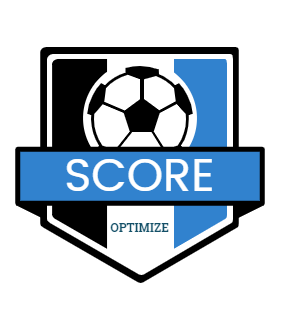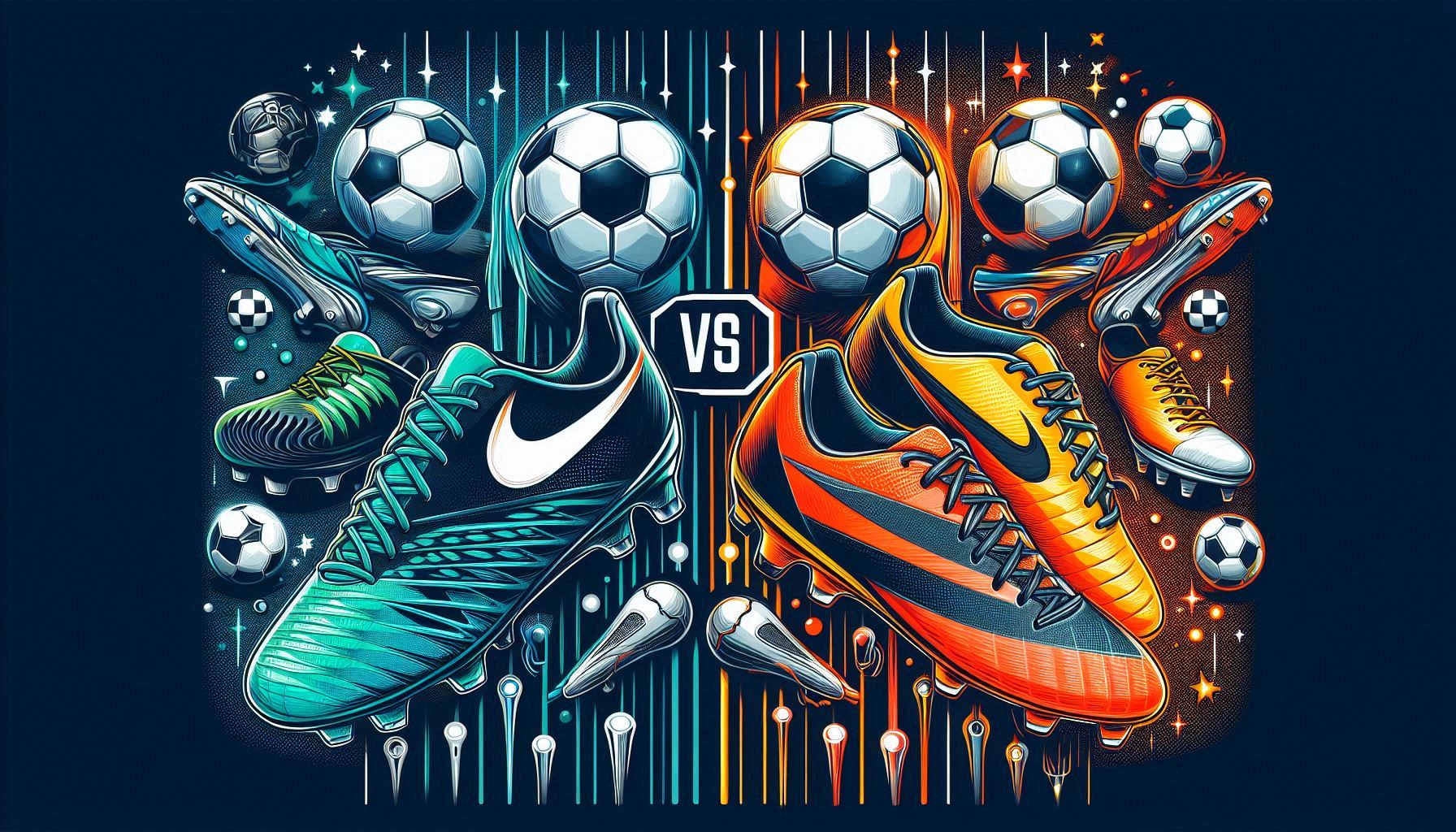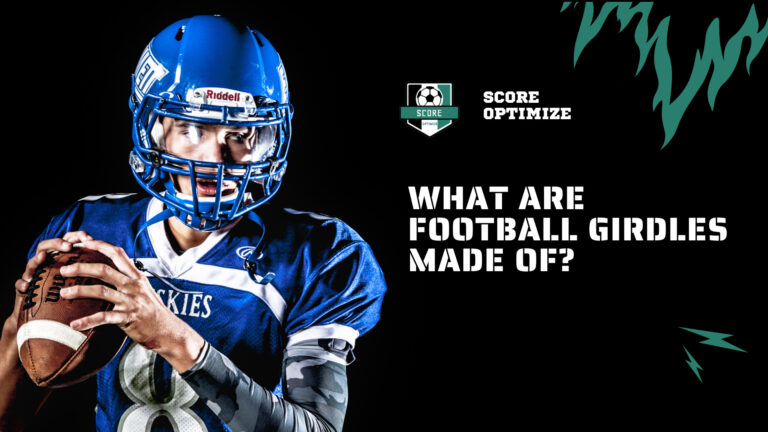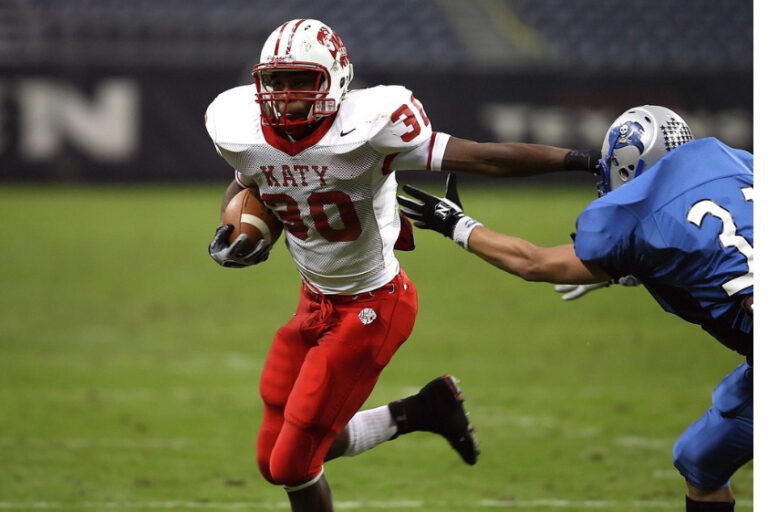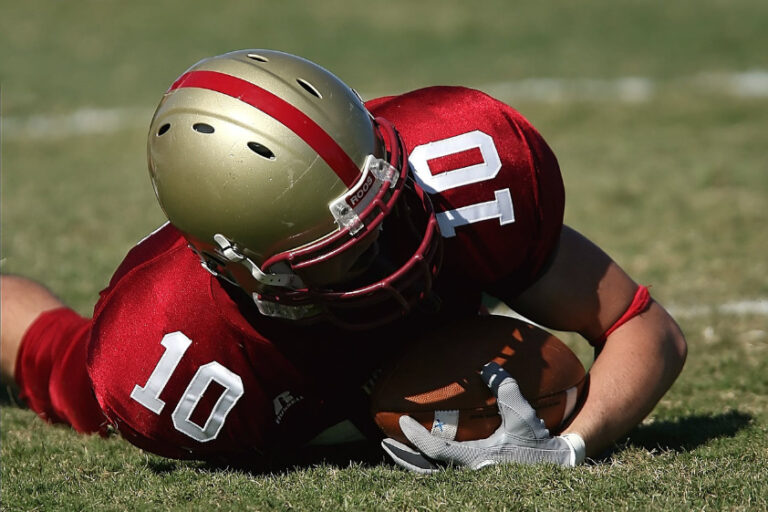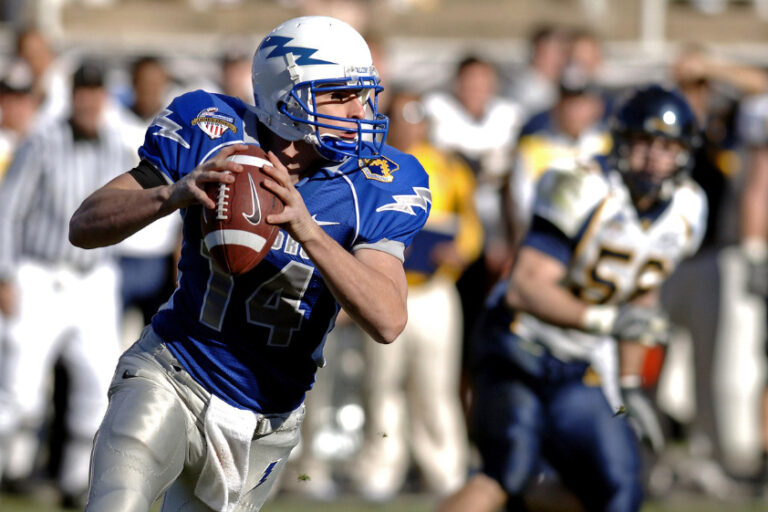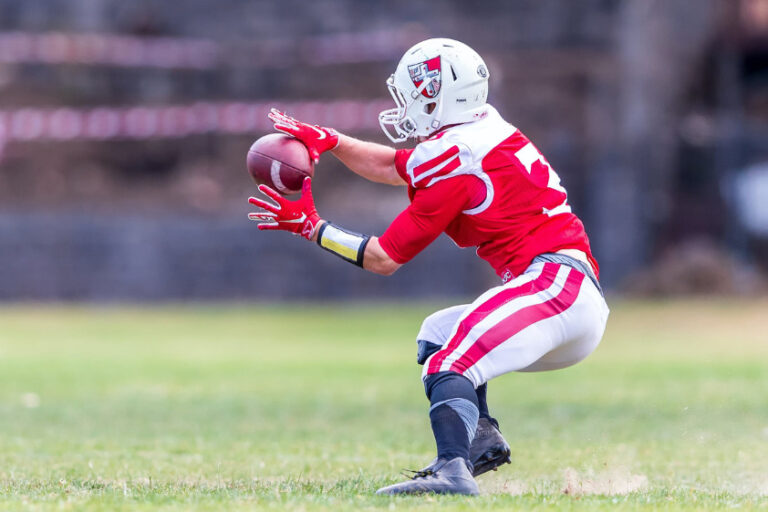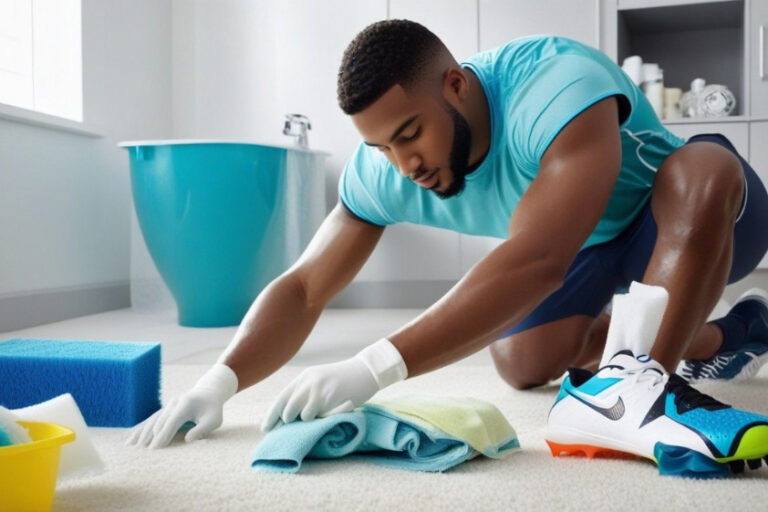Choosing the right cleats is crucial for athletes to perform at their best. In the debate of football vs soccer cleats, many players wonder whether soccer cleats can be used for football. This comprehensive guide delves into the differences between these two types of cleats, evaluating their design, functionality, and suitability for each sport. By the end of this article, you’ll understand the key factors that make each type of cleat unique and whether you can safely use soccer cleats for football.
Introduction to Cleats
Cleats play a pivotal role in an athlete’s performance, providing the necessary traction, stability, and comfort required for optimal play. While both soccer and football cleats are designed to enhance grip and support, their specific features cater to the unique demands of each sport. This guide explores whether soccer cleats can be used for football and provides a detailed comparison to help you make an informed decision.
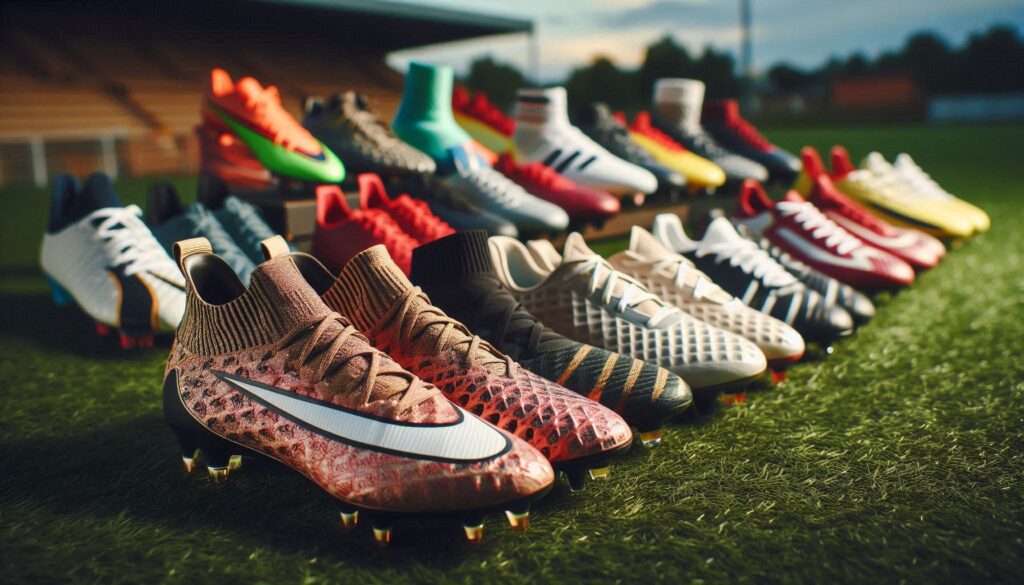
Soccer Cleats: Design and Functionality
Overview of Soccer Cleats
Soccer cleats are engineered to provide maximum traction and agility on the soccer field. They are designed with specific features tailored to the needs of soccer players, including:
- Lightweight Construction: Soccer cleats are typically lightweight to enhance speed and maneuverability.
- Flexible Outsole: The outsole is designed for quick changes in direction and speed, which is essential for soccer’s dynamic play.
- Low-Profile Design: Soccer cleats often have a low profile to facilitate close ball control and improved balance.

Design Features of Soccer Cleats
Key design features of soccer cleats include:
- Studs and Traction: Soccer cleats are equipped with various stud configurations (e.g., conical, bladed) to provide traction on grass and turf. These studs are generally shorter and arranged to optimize grip for running and quick turns.
- Upper Material: The upper part of the cleat is usually made from synthetic or leather materials designed for a snug fit and better ball control.
- Sock-Like Fit: Many soccer cleats feature a sock-like design or integrated sock liners for added comfort and support.
Advantages of Soccer Cleats
- Enhanced Ball Control: The design of soccer cleats allows for precise ball control and handling.
- Speed and Agility: Their lightweight nature and flexible outsoles enhance speed and agility on the field.
- Comfort: Soccer cleats are crafted to provide comfort during long periods of play, reducing foot fatigue.

Football Cleats: Design and Functionality
Overview of Football Cleats
Football cleats are designed to meet the specific demands of American football. They offer different features compared to soccer cleats, focusing on protection and stability:
- Heavier Build: Football cleats are generally heavier than soccer cleats to provide additional protection and support.
- High-Top Design: Many football cleats have a high-top design that offers ankle support, crucial for the physical nature of the sport.
- Rugged Outsole: The outsole is designed to provide strong traction and stability on both grass and artificial turf.
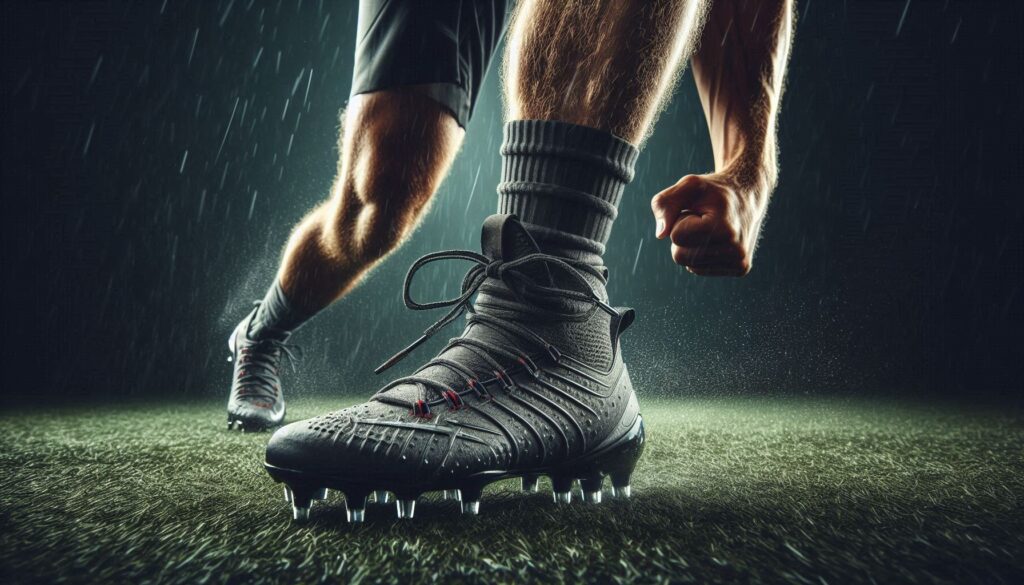
Design Features of Football Cleats
Key design features of football cleats include:
- Studs and Traction: Football cleats feature longer, more aggressive studs to provide grip on various playing surfaces, including muddy and uneven fields.
- Padding and Protection: They include extra padding and protective features to safeguard against impacts and collisions.
- Support and Stability: Football cleats often have enhanced support features, including ankle straps or high-top designs, to prevent injuries and improve stability.
Advantages of Football Cleats
- Impact Protection: The additional padding and support in football cleats protect players from high-impact collisions and tackles.
- Traction on Various Surfaces: The aggressive stud patterns ensure good traction on different field conditions, from grass to artificial turf.
- Ankle Support: High-top designs offer added ankle support, which is critical for the physical demands of football.
Can You Use Soccer Cleats for Football?
Comparing the Design of Soccer and Football Cleats
While soccer cleats and football cleats share similarities, their design differences reflect the distinct needs of each sport:
- Stud Length and Configuration: Soccer cleats have shorter studs optimized for quick direction changes and ball control, whereas football cleats have longer, more robust studs designed for traction and stability during tackles and physical play.
- Weight and Padding: Soccer cleats are lighter with less padding, enhancing agility, while football cleats are heavier with additional padding for protection.
- Ankle Support: Soccer cleats typically offer less ankle support compared to football cleats, which are designed to provide extra support and protection.
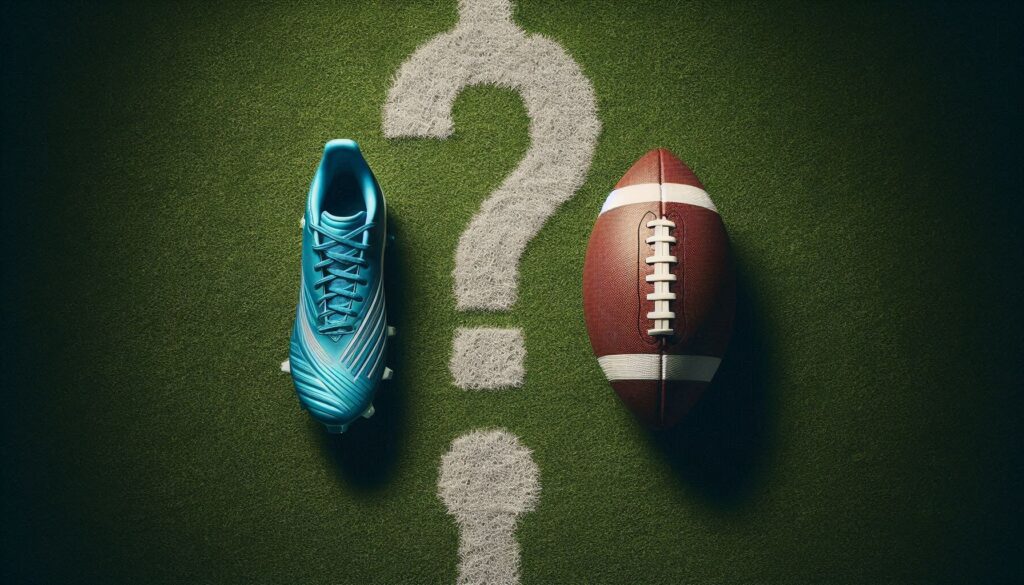
Performance Implications
Using soccer cleats for football may lead to performance issues:
- Traction: Soccer cleats may not provide the necessary traction for football, especially on slippery or uneven fields.
- Protection: Soccer cleats lack the additional padding and ankle support required for the physical nature of football, increasing the risk of injuries.
- Comfort and Stability: Soccer cleats may not offer the same level of comfort and stability needed for football, affecting overall performance.
Safety Considerations
Safety is a crucial aspect when choosing cleats for football:
- Injury Risk: Soccer cleats may not offer adequate protection against impacts, leading to a higher risk of injuries.
- Foot and Ankle Support: The lack of proper support in soccer cleats can lead to foot and ankle injuries during football play.
Football vs Soccer Field: Understanding the Differences
Field Surface Differences
The playing surfaces for soccer and football have notable differences:
- Soccer Fields: Typically feature a smooth, even grass or synthetic turf surface, designed for fast-paced, low-impact play.
- Football Fields: Often have a more rugged surface with varying conditions, including grass, artificial turf, and sometimes even mud, requiring cleats with more aggressive traction.
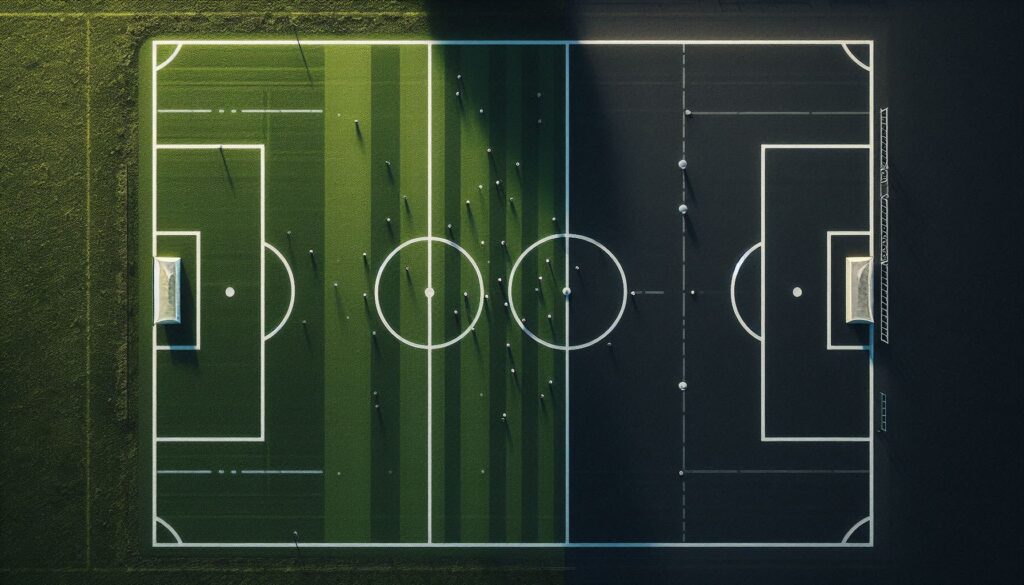
Impact on Cleat Performance
The field conditions directly affect the performance of cleats:
- Soccer Cleats: Designed for smooth surfaces, they may struggle on the rougher or more variable surfaces of a football field.
- Football Cleats: Built to handle diverse and challenging field conditions, providing better traction and stability on various surfaces.
Choosing the Right Cleats for Each Sport
Factors to Consider for Soccer Cleats
When choosing soccer cleats, consider:
- Playing Surface: Ensure the cleats are suited for the type of field you play on (grass, turf, etc.).
- Fit and Comfort: Look for a snug fit that enhances ball control and comfort.
- Traction Needs: Choose the right stud pattern for optimal traction and agility.

Factors to Consider for Football Cleats
For football cleats, consider:
- Protection Needs: Opt for cleats with adequate padding and ankle support.
- Traction Requirements: Choose cleats with appropriate stud length and configuration for various field conditions.
- Fit and Stability: Ensure the cleats provide a secure fit and support for physical play.
Recommendations for Multi-Purpose Cleats
If you need cleats for both sports:
- Look for Versatile Models: Some cleats are designed to perform well on both soccer and football fields, offering a balance between traction, protection, and comfort.
- Consider Hybrid Cleats: Hybrid models with adjustable stud configurations can provide versatility for different sports.
Conclusion: Making the Right Choice
In conclusion, while soccer cleats and football cleats serve similar purposes, their design features cater to the specific demands of each sport. Soccer cleats are optimized for speed and agility on smooth surfaces, while football cleats offer the protection and traction needed for the physical nature of football.
Using the right cleats for each sport ensures optimal performance and safety. By understanding the differences between soccer cleats vs football cleats and considering the unique demands of each sport, you can make an informed decision and choose the best cleats for your needs.
Whether you play soccer, football, or both, investing in the appropriate cleats will enhance your performance, comfort, and safety on the field.
